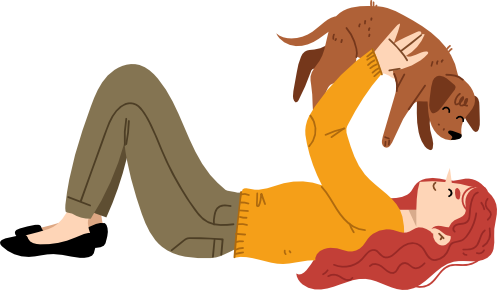Today we’re talking to Hannah Branigan about cueing versus shaping in your training sessions. Now this might sound a bit nerdy – and it probably will be – but it’s actually really important for novice trainers! I know I personally got stuck on this a lot when I was starting out as a new trainer. And Hannah is EXACTLY who I wanted to talk to about this topic.
Hannah is the host of Drinking from the Toilet, one of my favorite training podcasts. She’s also the author of Awesome Obedience and its accompanying field guide. She teaches at Fenzi Dog Sports Academy and runs Wonderpups training. Hannah has a real skill for breaking down training into teenie tiny increments and creating clean loops of training. It’s one of the things I admire about her most.
You can now support the podcast through Patreon for as little as $3/month! Patrons can submit questions, which we’ll answer at the end of each episode. Join the conversation over at patreon.com/canineconvos.
Show Notes:
Hannah, have you seen the problem that we’re talking about today – where a trainer is hoping to practice cleaning up some cues, but their dog keeps throwing new behaviors at them like a shaping session?
- There is value in this, but also it can be scary
- It is very common for both novice trainers and professional and experienced trainers
- It doesn’t have to be this way; there are ways to structure the training to avoid it.
What are some of the things you do to try and prevent this confusion for the dog?
- It is important to keep the cue sessions and shaping (operant) sessions separate. Decide which session you want to do before your start.
- Be thoughtful of the picture you are presenting
- The cycle of a single training repetition begins and end with the treat
- If they are offering other behaviors during a shaping session, there is a timing issue with your clicks
What about if there’s already a problem when a team comes to you? How do you help them get shaping versus cueing straightened out?
- Focus on mechanics
- Avoid using the terms unless they ask about them, use their language back to them
- Give them context to what you are teaching
- You do the work to set them up for success
Do you find any use for NRM or keep going signals here? Stationing?
- No Reward Markers indicate that reinforcement is not available
- It can put them into extinction/frustration
- Keep Going Signals are usually functioning as cues themselves, such as pedaling a bike vs pressing the gas on a vehicle.
- Stationing is a place for not actively training
- It can be used as “punctuation”
- Start on the station, end on the station
- It can be a good place to go for a break
Patreon questions answered:
- If life ever maybe possibly pulls you in 8 different directions and you aren’t in a great headspace, what are some ways you have been able to reinforce your own behaviour of training the dogs?
- If we have a Human Moment and get angry (yell, stomp, maybe yank a leash) and scare our dogs, what are some good ways to make repairs?
- Do you have any fun ‘throwaway’ behaviours that are good for practicing observation and mechanical skills (ie toe flexing)?
Where to find Hannah:
Drinking From the Toilet Podcast: https://hannahbranigan.dog/dog-training-podcast/
Awesome Obedience: https://hannahbranigan.dog/awesome-obedience/
Zero to CD: https://hannahbranigan.dog/z2cd/

